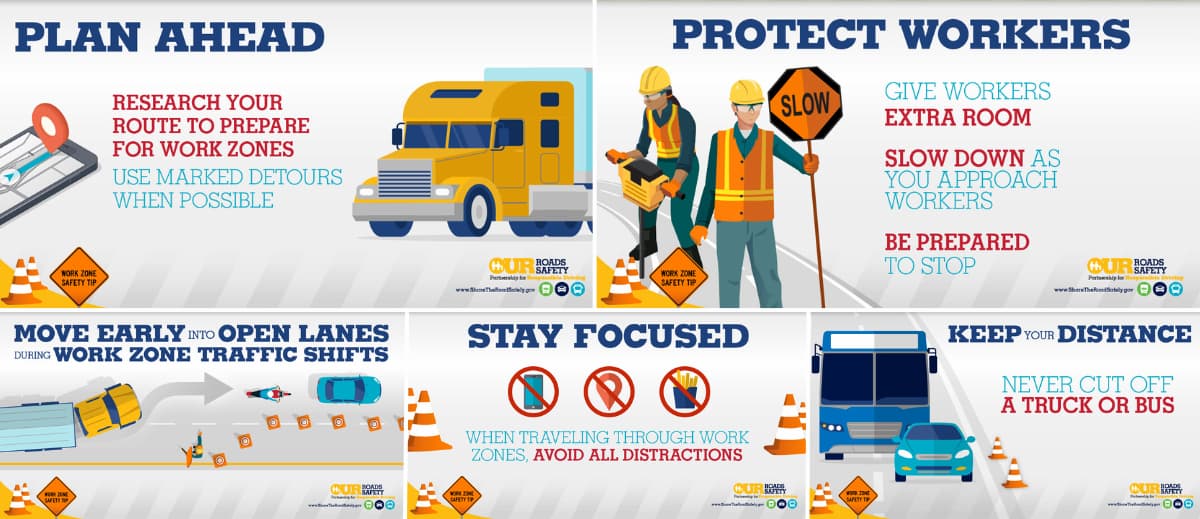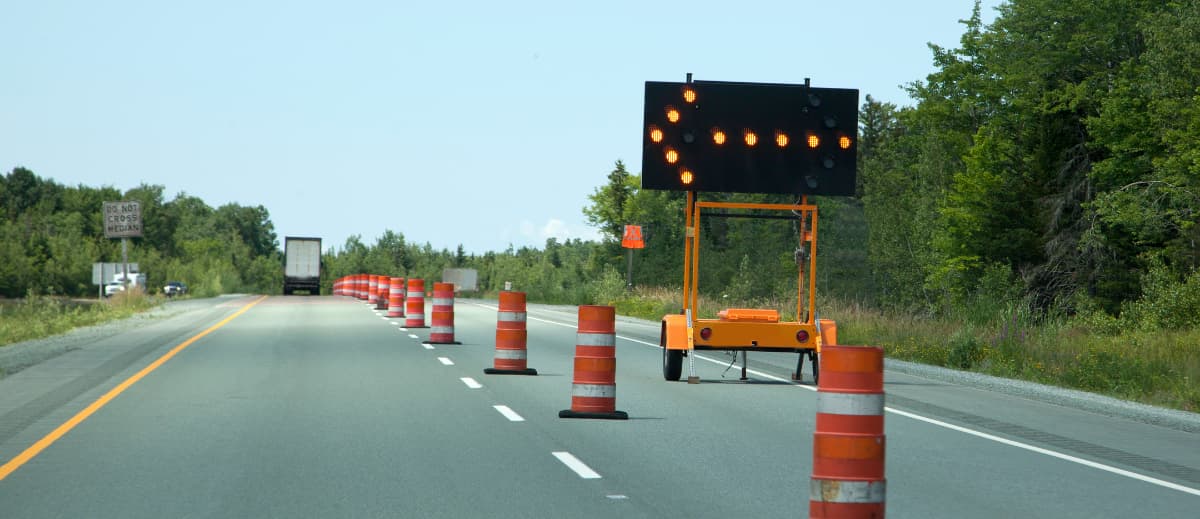Heavy equipment and live traffic make roadway work zones one of the most dangerous environments to navigate. Whether operating machinery or passing through a job site, safety starts with alertness and communication. This National Work Zone Awareness Week, we spotlight best practices to protect both crews and drivers.

Keys to Stay Safe
Follow all signage and merge early when driving through a work zone. Fasten your seatbelt, travel the speed limit, and avoid tailgating vehicles. Be prepared to turn on your four-way flashers and ensure workers have enough space to operate. Most vehicles have blind spots—stay alert to avoid accidents.
Employees should wear high-visibility vests, face traffic, and appoint a spotter to watch for oncoming vehicles. Drink water and take frequent breaks, especially when working on asphalt. Report unsafe conditions to a supervisor.
Hazard Controls
Improperly set-up traffic zones can cause vehicle and work site injuries. To prevent accidents, prepare a job safety analysis (JSA) form for hazard identification, mitigation controls, and emergency response plans. Read the Manual on Uniform Traffic Control Devices for signage and cone setup.
Four Parts to Traffic Control Zones
Advanced warning area alerts drivers to upcoming work zones, speed limits changes, and hazards. Use high-visibility traffic signs to warn drivers, and space them out based on traffic flow.
Transition area is where vehicles merge into a separate lane to make room for workers and equipment. High-visibility traffic cones should cut-off lanes for worksites. Use flaggers to guide two-way traffic for smaller roads.

Activity area is the work zone. Traffic cones create a buffer zone between the work site and vehicles. Workers should have enough space to store items and take breaks safely.

Termination area alerts vehicles to the end of the work zone. Traffic cones and signs should merge vehicles back to normal traffic patterns.


